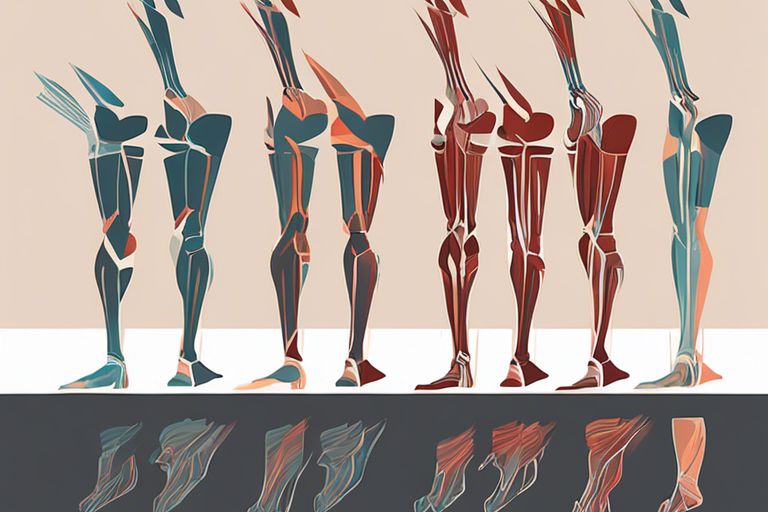Have you ever wondered whether the speed at which you walk affects the benefits you receive from it? While walking at slow speeds may still provide some health benefits, research has shown that increasing your walking pace can significantly improve cardiovascular health, endurance, and calorie burn. In this blog post, we will delve into the impact of walking speed on the benefits you experience, and how you can maximize the benefits of walking by adjusting your pace.
Understanding Walking Speed
Before we delve into whether walking speed affects its benefits, it’s important to understand the concept of walking speed itself. Walking speed refers to how quickly you are able to cover a certain distance on foot. It is typically measured in meters per second or miles per hour and can vary greatly from person to person.
Types of Walking Speeds
When it comes to walking, there are various types of walking speeds that can impact the benefits you may receive from your walks. These include casual walking, brisk walking, power walking, and race walking. Each type of walking speed has its own set of benefits and can be tailored to your specific fitness level and goals. The casual walking speed is typically around 2.5 miles per hour, while brisk walking falls between 3 to 4.5 miles per hour. Power walking involves walking at a faster pace, often with exaggerated arm movements, and race walking is a discipline of competitive walking with specific rules and speeds to adhere to.
| Type of Walking Speed | Typical Speed Range |
|---|---|
| Casual walking | 2.5 mph |
| Brisk walking | 3 – 4.5 mph |
| Power walking | 4.5 – 5.5 mph |
| Race walking | Varies |
Measurement of Walking Speed
When it comes to measuring walking speed, it can be done using various tools such as a stopwatch, treadmill, or pedometer. The most common way to measure walking speed is by timing how long it takes you to cover a certain distance on foot. By measuring your walking speed, you can track your progress over time and set new goals for yourself.
Health Benefits of Walking
If you are looking for a simple yet effective way to improve your overall health, walking could be the answer. Not only is it convenient and accessible to most people, but it also offers a wide range of physical and mental health benefits. In this chapter, we will explore the various ways in which walking can positively impact your health and well-being.
Overview of Walking as Exercise
Walking is considered one of the most versatile forms of exercise, suitable for individuals of all ages and fitness levels. It is a low-impact activity that can be easily incorporated into your daily routine, whether it’s a brisk walk in the morning or a leisurely stroll in the evening. Regular walking has been shown to improve cardiovascular fitness, strengthen bones and muscles, and boost overall endurance. Additionally, it can also help you manage your weight, reduce stress, and improve your mood.
Influence of Speed on Cardiovascular Health
When it comes to cardiovascular health, the speed at which you walk plays a significant role. Walking at a brisk pace can elevate your heart rate, leading to improved cardiovascular fitness and lower risk of heart disease. By challenging your cardiovascular system, you can strengthen your heart and improve blood circulation throughout your body. On the other hand, walking at a slower pace may still provide some benefits, but it may not be as effective in improving cardiovascular health as faster-paced walking.
Metabolic Changes at Different Walking Speeds
Walking at different speeds can also have an impact on your metabolism. When you walk at a moderate to brisk pace, your body relies more on fat stores for energy, which can help you manage your weight more effectively. This type of walking also stimulates your metabolism, leading to increased calorie burn both during and after your walk. On the other hand, walking at a slower pace may not have the same metabolic benefits, as it does not require as much energy and does not challenge your body in the same way.
By understanding the influence of walking speed on your health, you can tailor your walking routine to maximize its benefits. Whether you choose to take a leisurely stroll or pick up the pace, the important thing is to keep moving. Remember, even a little bit of walking each day can go a long way toward improving your overall health and well-being.
Psychological Effects of Walking Speed
However, it’s not just the physical health benefits that are affected by your walking speed. Your psychological well-being can also be impacted by how fast or slow you walk.
Impact on Mental Health
When you walk at a brisk pace, the increased heart rate and circulation can lead to a release of endorphins in your brain, which can improve your mood and reduce feelings of stress and anxiety. On the other hand, walking at a slower pace allows you to focus more on your surroundings and can have a calming effect on your mind, reducing feelings of agitation and frustration. It’s important to find a walking speed that works best for your mental health needs.
Walking Speed and Cognitive Function
Your walking speed can also have an impact on your cognitive function. Research has shown that walking at a faster pace is associated with improved cognitive performance, including better attention, memory, and executive function. This may be due to the increased blood flow and oxygen to the brain that comes with faster walking. Conversely, walking at a slower pace can provide an opportunity for more mindful and meditative walking, which can help clear your mind and improve your focus and concentration.
Walking Speed in Different Populations
Now, let’s explore how walking speed varies across different populations and its impact on the benefits of walking. Research has shown that walking speed can vary significantly depending on factors such as age, fitness level, and overall health. Understanding how walking speed affects different populations can help tailor walking recommendations to individual needs.
Age-Related Variations in Walking Speed and Benefits
As you age, your walking speed may naturally decrease due to factors such as decreased muscle strength, joint flexibility, and overall endurance. However, it’s important to note that walking at a slower pace still offers many benefits, such as improved cardiovascular health, joint mobility, and mental well-being. In fact, studies have shown that even slow walking can have significant positive effects on overall health, especially in older adults. Therefore, don’t be discouraged if your walking speed decreases with age; the important thing is to keep moving and stay active.
Individualized Walking Speed Recommendations
When it comes to walking, there is no one-size-fits-all approach. Your ideal walking speed may be different from someone else’s, based on factors such as fitness level, health conditions, and personal preferences. It’s important to find a comfortable walking speed that allows you to maintain a steady pace without feeling too exhausted. Remember, the goal is to reap the benefits of walking while also enjoying the activity. If you have specific health concerns or conditions, consult with a healthcare professional to determine the most suitable walking speed for you.




